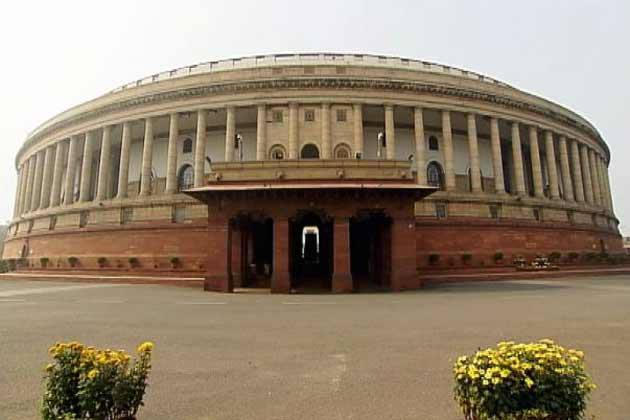 Lok Sabha (lower house). [Photo of the Indian Parliament from Lok Sabha TV on Facebook]
Lok Sabha (lower house). [Photo of the Indian Parliament from Lok Sabha TV on Facebook]
[This is an excerpt from an article in The Round Table: The Commonwealth Journal of International Affairs.]
Public life in India
In public life, the markers of Muslim identity – beards, skullcaps and head scarves – invite frowns, even violence, in India. Fear is the constant companion of Muslims in India today. In post-independence India, sectarian violence was often orchestrated to win elections, but it was almost always followed by a process of reconciliation. Hindu-Muslim rivalry never constituted the political language of the Congress Party, the principal recipient of Muslim votes for much of India’s 70 years since independence. The BJP, however, seeks to permanently consolidate Hindus against Muslims and to keep the social cauldron simmering (Ashraf, Citation2017). The Hindutva movement has specialised in fomenting low-intensity communal riots (Pai & Sajjan, Citation2018). The clashes are aimed at polarising the electorate along religious lines (Jha, Citation2017, p. 49).
We have seen this process of ‘othering’ Muslims gather momentum after the coming into power of the BJP in 2014 (Jaffrelot, Citation2021). Many Muslims were lynched in different parts of India but the official response was to take it as a law and order issue. Some of the culprits were even valorised by members of the ruling party (NDTV, Citation2018). This process gathered momentum after Modi won a second term in 2019. This victory made the rightist forces understand that the more Muslims were pushed to the margins the more strength it would give to their majoritarian agenda. Social media played a big role in BJP’s onward march. The BJP has the country’s most impressive social media machine. Legislation beginning with The Muslim Women (Protection of Rights on Marriage) Act, 2019 which criminalised the triple talaq (summary divorce) and abrogation of Article 370 of the Constitution which had given special status to the state of Jammu & Kashmir, and the enactment of the Citizenship Amendment Act happened in quick succession, adding to pressure on Muslims. The Muslim response was of total silence to the first two but realising that the last one was going to create an existential crisis for them, they decided to protest. It is important to understand these protests and subsequent developments along with the response of the state and large section of the media to have a better appreciation of the predicament of Muslims in present day India.
India’s BJP hangs on to power but loses overall control
India at 75: 2022 special edition
Modi plays the foreign policy card as election voting starts
There were unique features to these protests. The Muslim masses did not let any political party or their clergy to speak for them in these protests. They took extra care to use only national symbols and it was the youth and women who were leading these protests. These protests challenged a few stereotypes. Muslims have always been accused of agitating for sectarian causes using religious symbols, thus demonstrating their exclusivity. This time, Muslims were agitating for protecting the basic values of the Indian constitution and had chosen to leave their religious symbols behind. In this agitation, these youths had risen up for the idea of India and had been constantly invoking the constitution and its spirit by foregrounding their national identity. More importantly, the redeeming feature of these protests across India was their non-violent character (for a detailed account, see Jaffrelot, Citation2021).
Secondly, Muslims had always been projected as more patriarchical than other communities and accused of keeping their women locked inside their homes and not allowing them access to the public sphere. This time, it was the Muslim women, more than the men, who were visible in protests; the most famous of them was at Shaheen Bagh in South-East Delhi (Salam, Citation2023).
The response of the state was brutal. Muslims had no right to protest in this ‘new India’. Scores of people were beaten up, many others arrested (Bhattacharya, Citation2020; Sabrangindia, Citation2019). The unprecedented brutality of the police towards agitating students and other protestors culminated in more than 30 protestors getting killed (Gulf News, Citation2019). The administration claimed compensation from protestors for any damage done to public property during these protests (India Today, Citation2019). Although a large number of non-Muslims joined these protests, most media outlets constantly branded them as Muslim protests and as a conspiracy against India (Uniyal, Citation2020). Members of the ruling party continued to spew communal venom through all this. It eventually led to riots in Delhi where mobs attacked and killed Muslims while the police looked the other way (Gettleman et al., Citation2020). Sixteen mosques and a few madrasas were officially listed as having been attacked and damaged. ‘The fury the mobs vented on them was Taliban-esque in nature. They showed their extreme contempt for sacred spaces that were not theirs’ (Ashraf, Citation2020).
State repression soon started. It began in Delhi when police forcibly entered the campus of Jamia Millia Islamia in New Delhi, and assaulted students and even damaged the library, around 80 were hospitalised and it was all captured on CCTV (The Economic Times, Citation2019). Then police unleashed violence in the Aligarh Muslim University. The BJP aggravated fear of the Other and anger in a systematically aggressive manner. Social media were also used viciously (Kavish, Citation2020). Such demonstrations may happen in future as well, and they will also turn violent as unruly elements will surely join them as happened in this case. For the state, it provided the ‘incontrovertible evidence’ of Muslims’ intolerance and their proclivity for violence. It was easy now to ‘prove’ that all Muslims are potential mischief makers. It led to the stereotypical image of Muslims getting further entrenched in the minds of ordinary Indians.
Mirza Asmer Beg is Professor, Department of Political Science, Aligarh Muslim University, India.



